Abstract
1. The purpose of this study was to investigate the effect of the intraperitoneal (I.P.), intravenous (I.V.) or intrapreoptic area (POA) injection of prostaglandin E2 (PGE2) on the body temperature of restrained and unrestrained rats. The effect of I.P. PGE2 on the body temperature of rats during fever induced by I.P. injection of interleukin-1 beta (IL-1 beta) was also investigated. 2. Prior to injection, restrained rats had body temperatures of approximately 1 degree C higher than unrestrained rats. The I.P. injection of PGE2 (0.05 and 0.5 mg kg-1) caused body temperature to fall towards the pre-restraint levels in a dose-dependent manner. This fall in body temperature was preceded by a sharp increase in tail skin temperature that was also dependent on dose. The I.P. injection of PGE2 had no effect on the body temperature of unrestrained animals. 3. The I.V. injection of PGE2 caused very little change in the body temperature of restrained rats. However, when injected I.V. into unrestrained animals, PGE2 caused dose-dependent fevers. The injection of PGE2 (50 ng) into the POA resulted in fever in both restrained and unrestrained animals. 4. The I.P. injection of IL-1 beta (10 micrograms kg-1) caused a biphasic fever that lasted at least 420 min. The I.P. injection of PGE2 180 min after the injection of IL-1 beta caused a transient decrease in the rats' body temperature. This drop in body temperature was not associated with a decrease in metabolic rate. 5. These data support the hypothesis that during restraint stress hyperthermia and IL-1 beta fever, the I.P. injection of PGE2 acts peripherally to lower the body temperature of rats.
Full text
PDF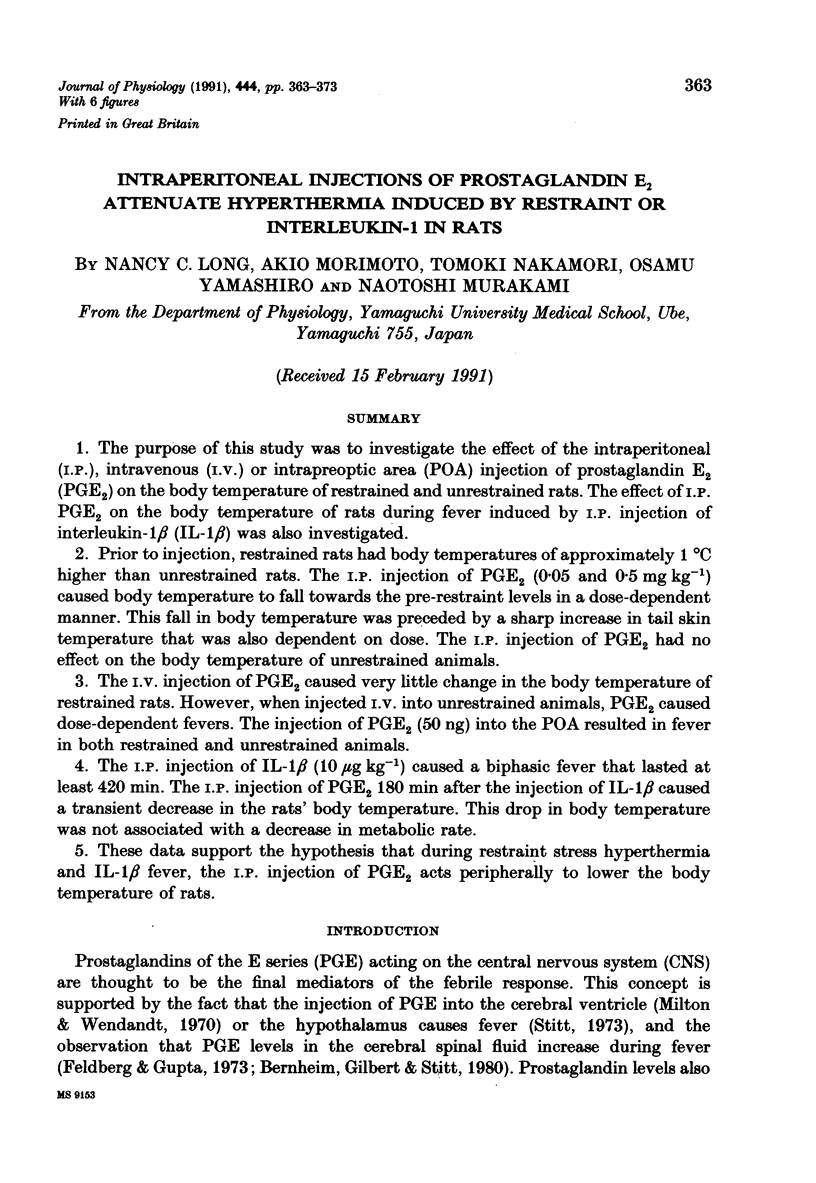
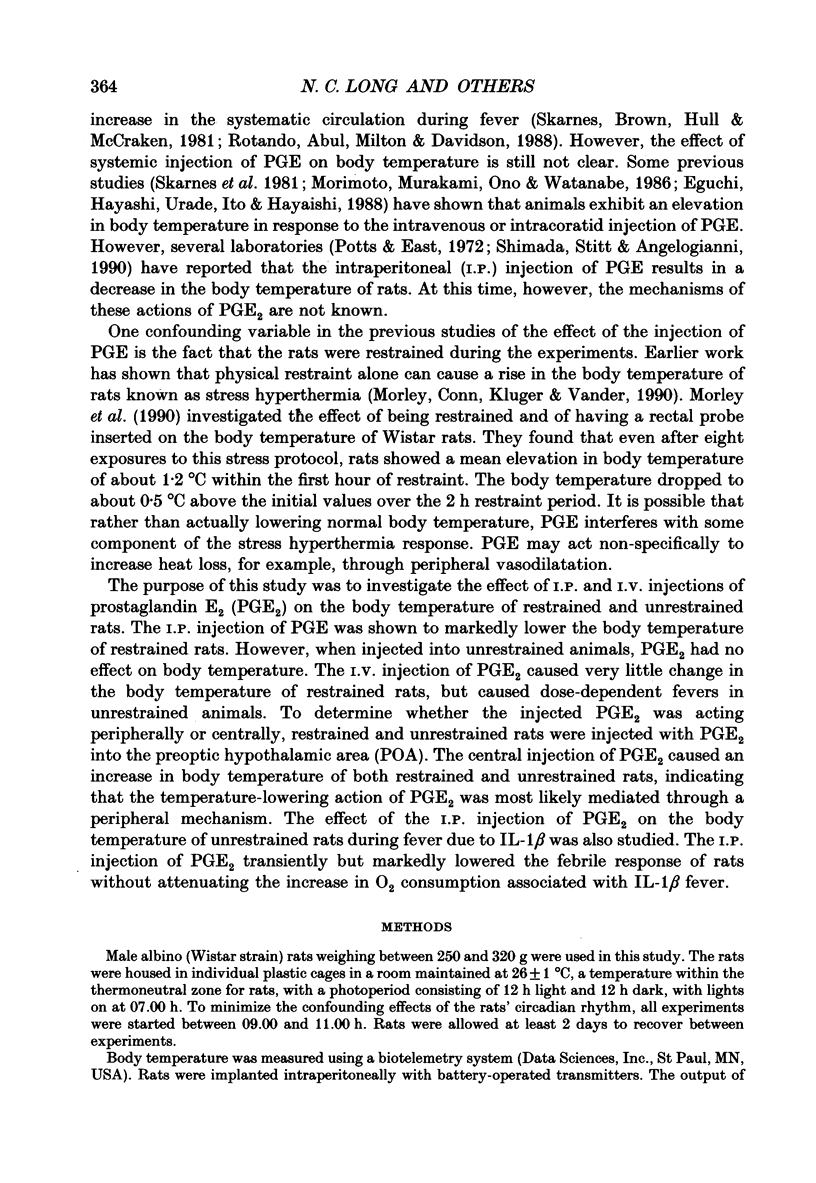
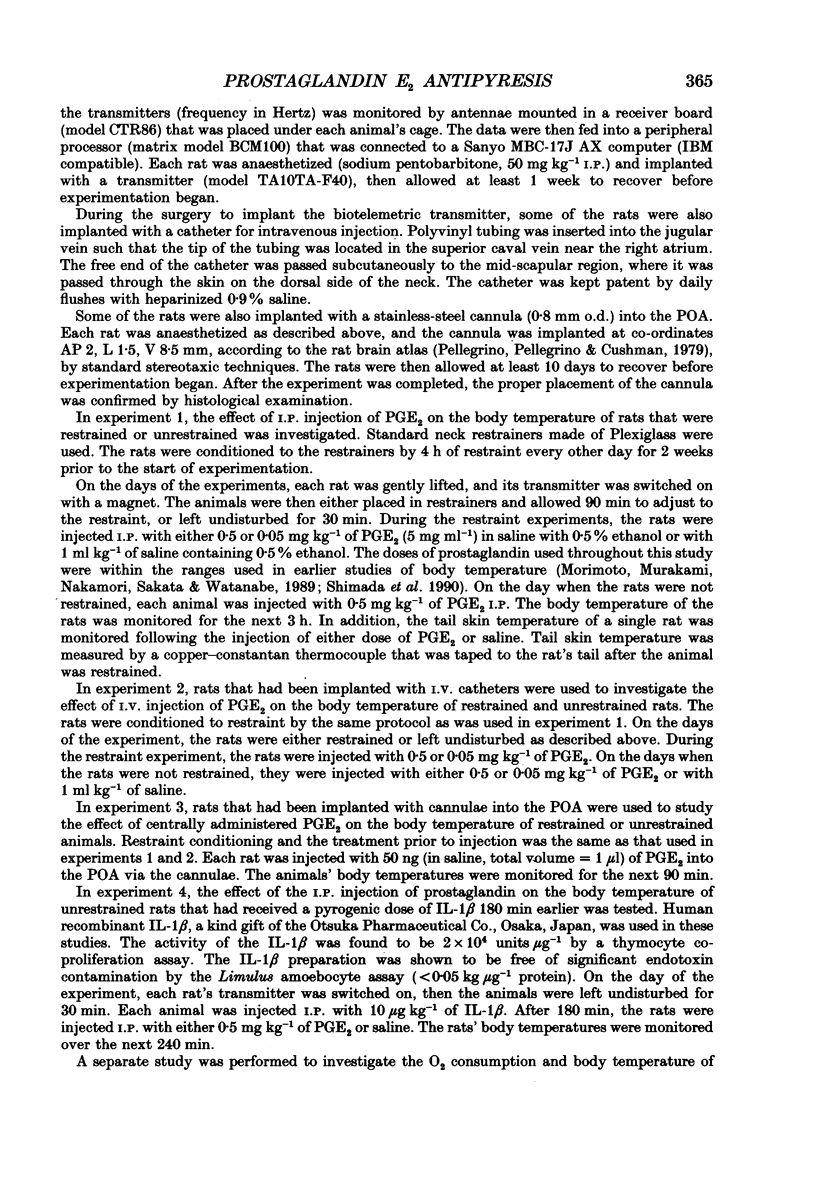
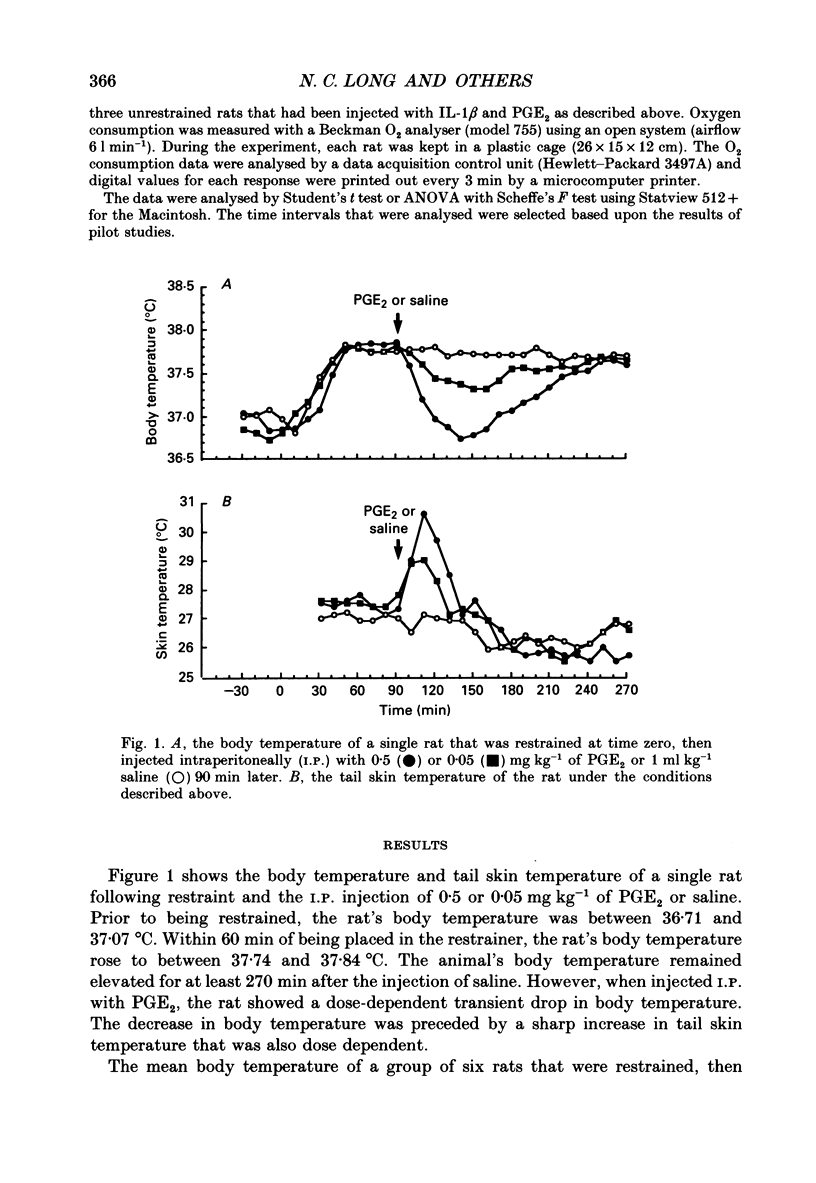
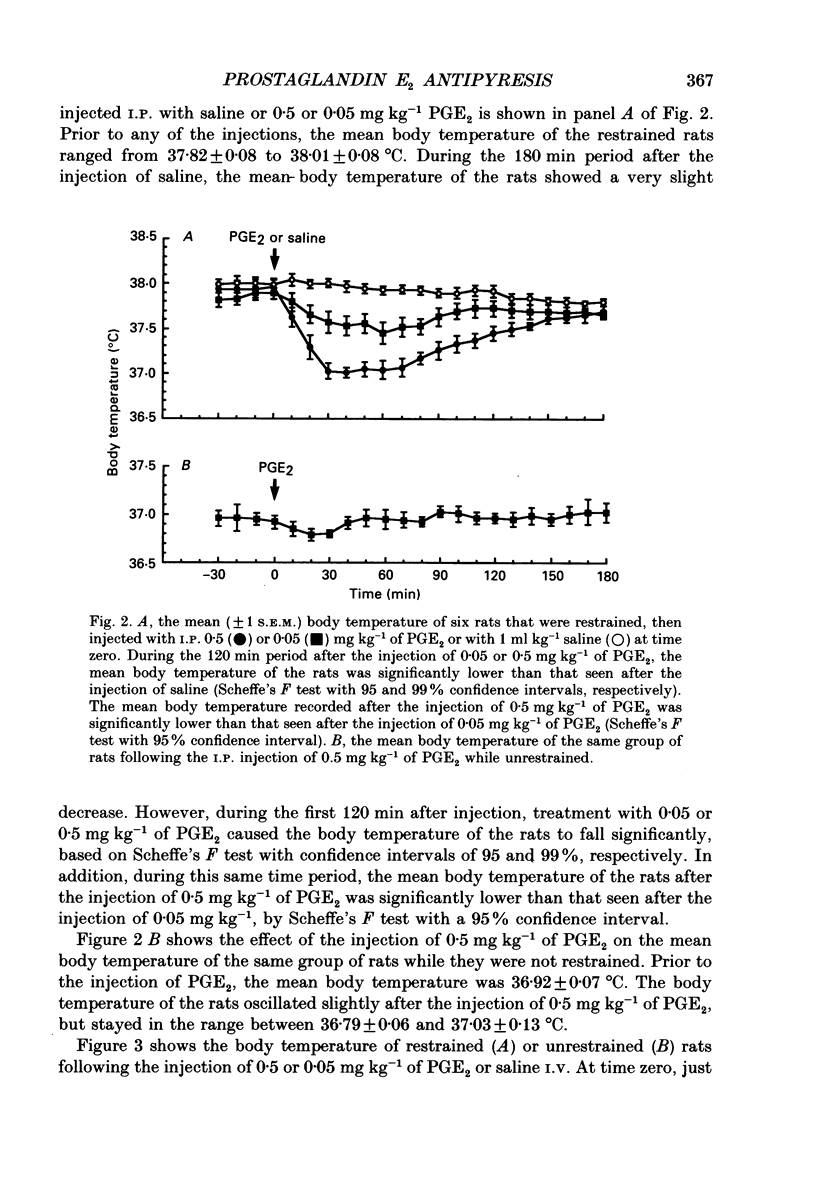
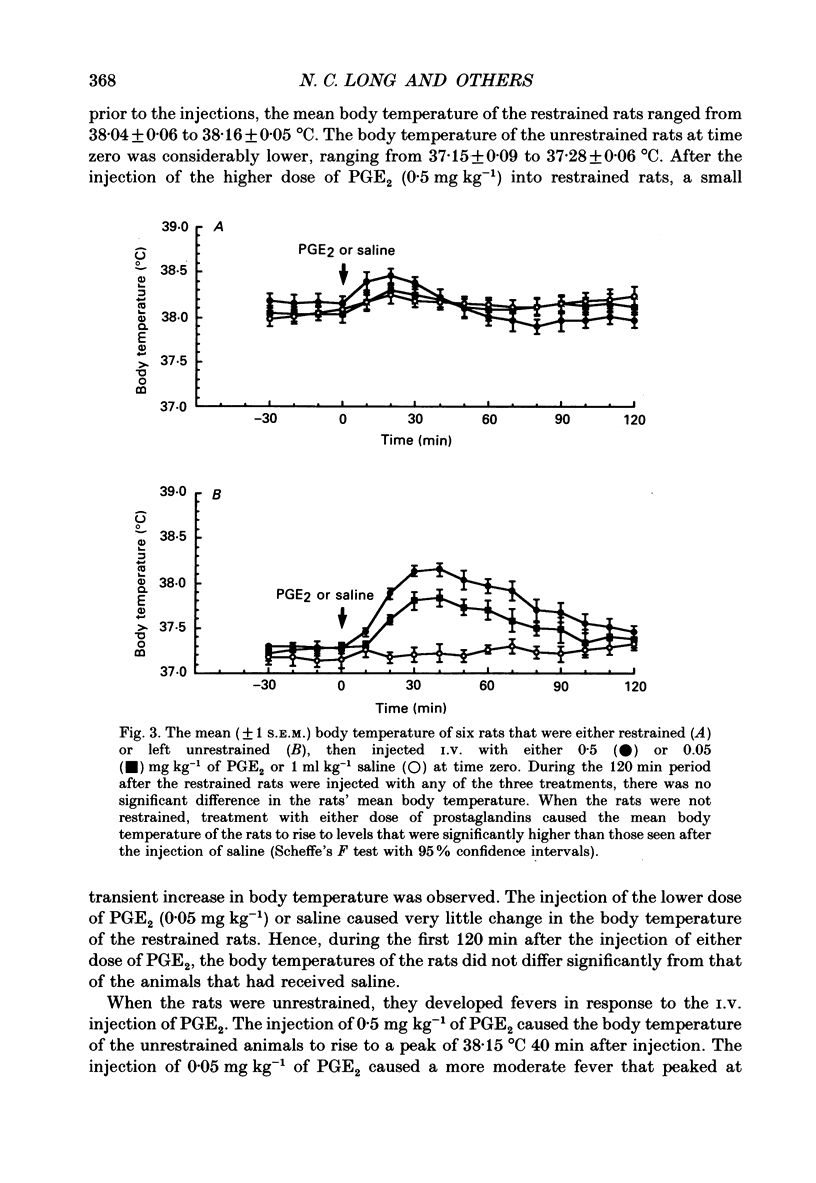
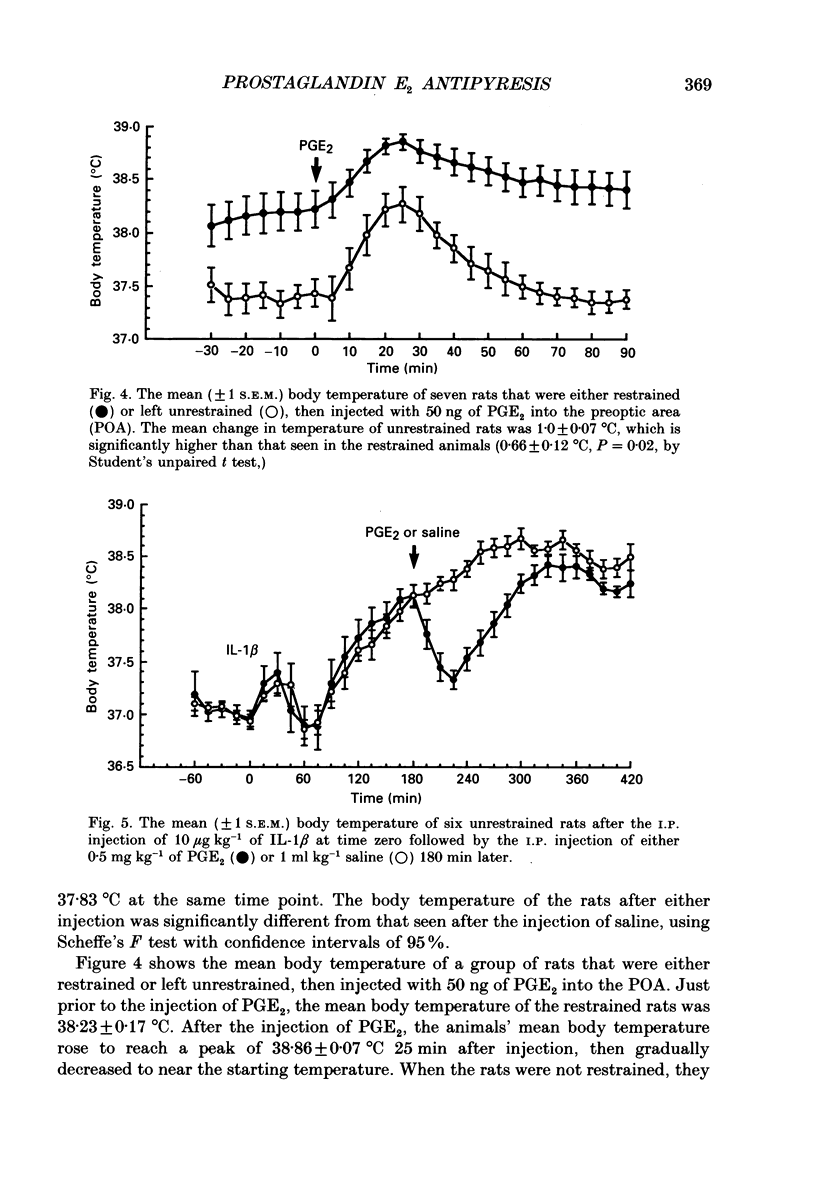
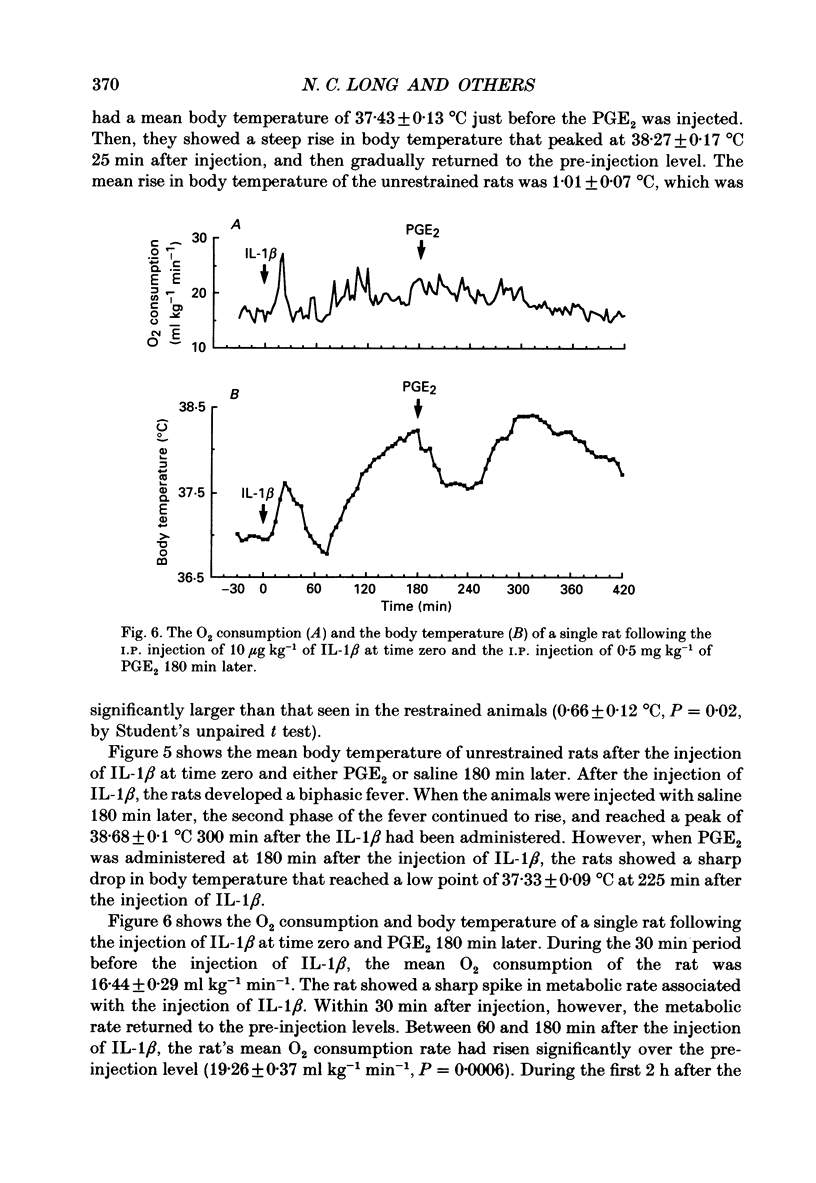
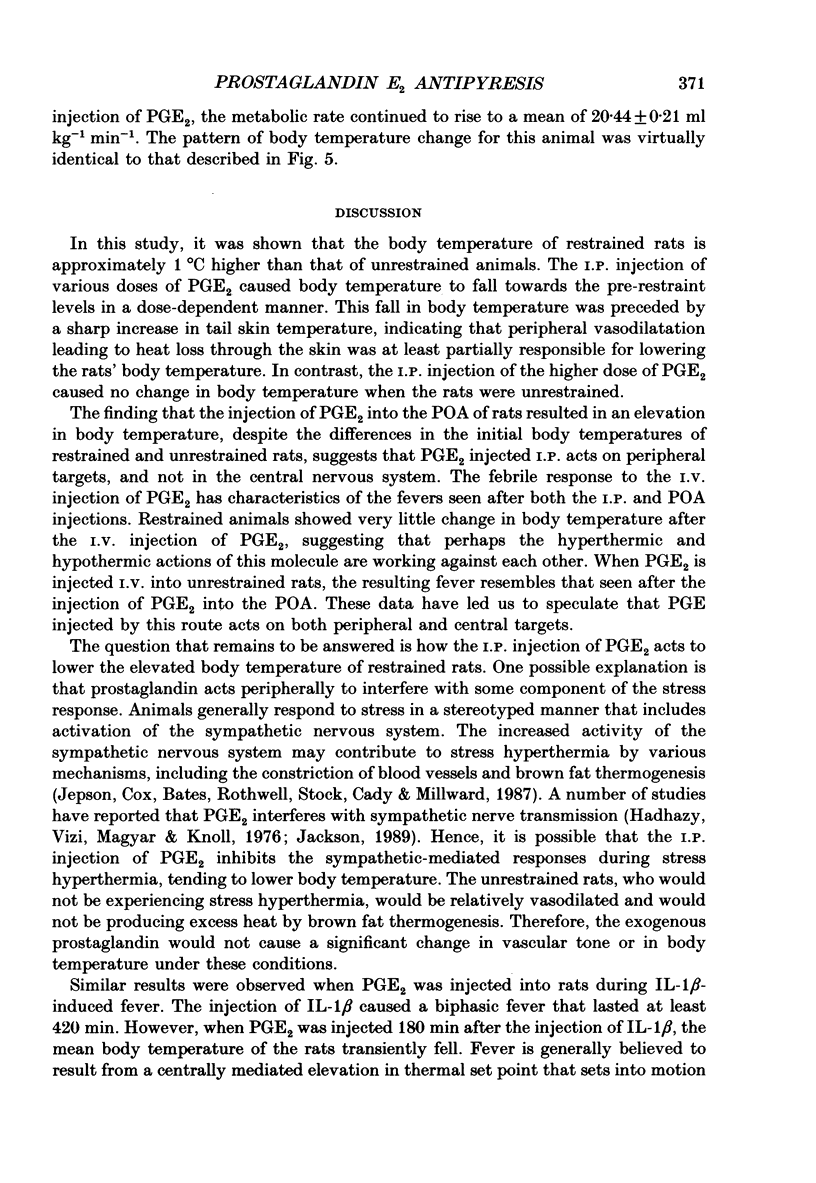
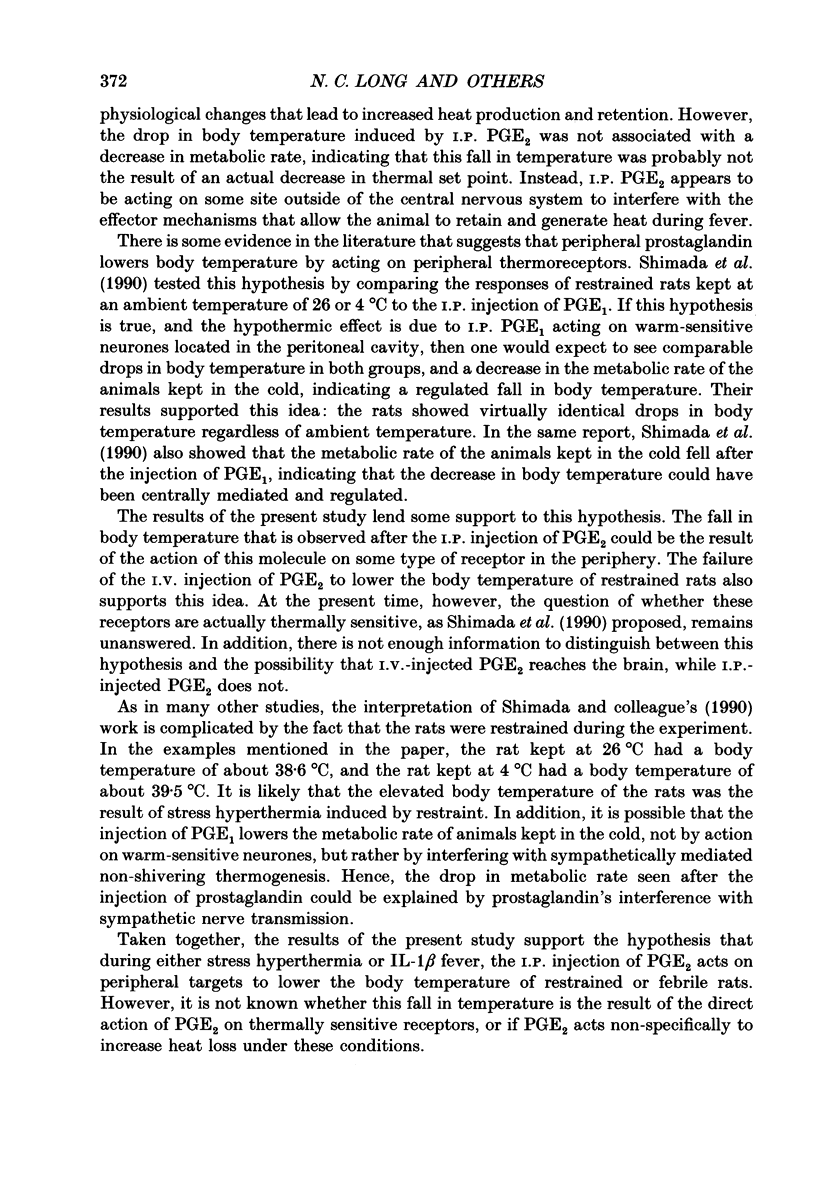
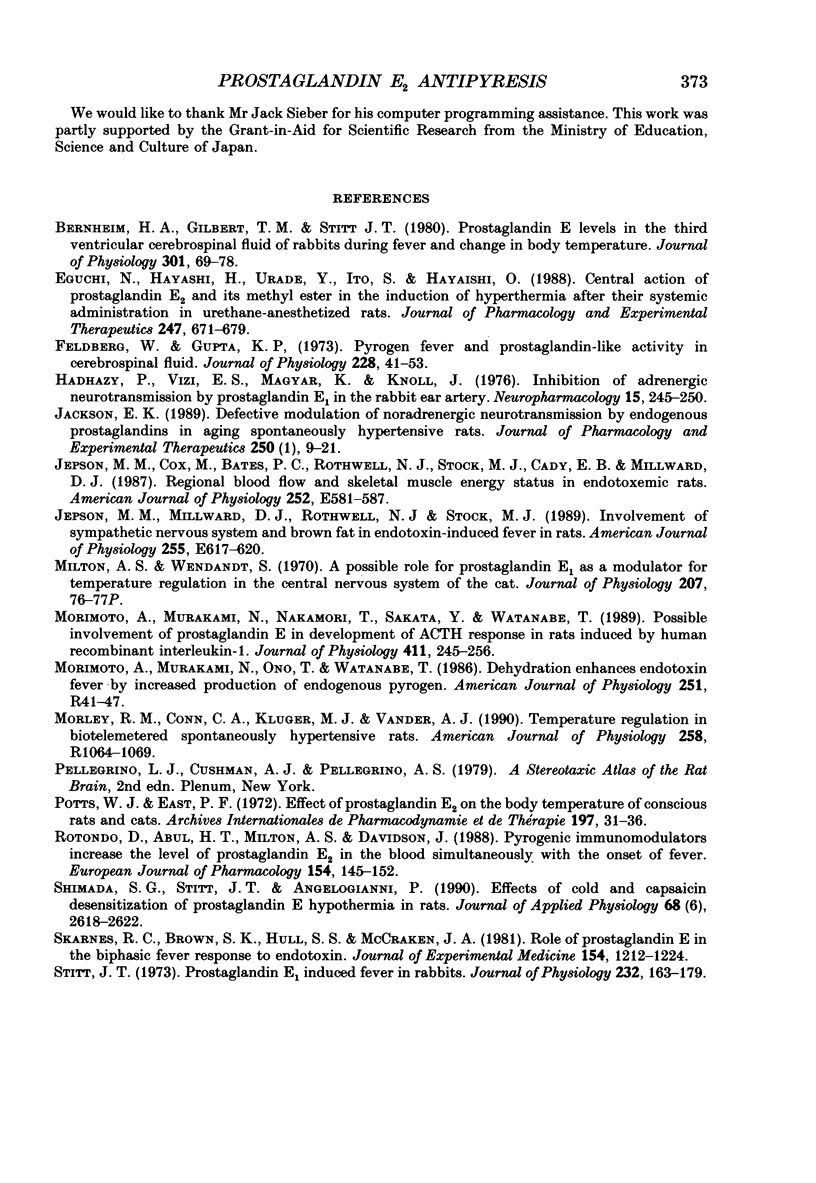
Selected References
These references are in PubMed. This may not be the complete list of references from this article.
- Bernheim H. A., Gilbert T. M., Stitt J. T. Prostaglandin E levels in third ventricular cerebrospinal fluid of rabbits during fever and changes in body temperature. J Physiol. 1980 Apr;301:69–78. doi: 10.1113/jphysiol.1980.sp013189. [DOI] [PMC free article] [PubMed] [Google Scholar]
- Eguchi N., Hayashi H., Urade Y., Ito S., Hayaishi O. Central action of prostaglandin E2 and its methyl ester in the induction of hyperthermia after their systemic administration in urethane-anesthetized rats. J Pharmacol Exp Ther. 1988 Nov;247(2):671–679. [PubMed] [Google Scholar]
- Feldberg W., Gupta K. P. Pyrogen fever and prostaglandin-like activity in cerebrospinal fluid. J Physiol. 1973 Jan;228(1):41–53. doi: 10.1113/jphysiol.1973.sp010071. [DOI] [PMC free article] [PubMed] [Google Scholar]
- Hadhádzy P., Vizi E. X., Magyar K., Knoll J. Inhibition of adrenergic neurotransmission by prostaglandin E1 (PGE1) in the rabbit ear artery. Neuropharmacology. 1976 Apr;15(4):245–250. doi: 10.1016/0028-3908(76)90071-x. [DOI] [PubMed] [Google Scholar]
- Jackson E. K. Defective modulation of noradrenergic neurotransmission by endogenous prostaglandins in aging spontaneously hypertensive rats. J Pharmacol Exp Ther. 1989 Jul;250(1):9–21. [PubMed] [Google Scholar]
- Jepson M. M., Cox M., Bates P. C., Rothwell N. J., Stock M. J., Cady E. B., Millward D. J. Regional blood flow and skeletal muscle energy status in endotoxemic rats. Am J Physiol. 1987 May;252(5 Pt 1):E581–E587. doi: 10.1152/ajpendo.1987.252.5.E581. [DOI] [PubMed] [Google Scholar]
- Jepson M. M., Millward D. J., Rothwell N. J., Stock M. J. Involvement of sympathetic nervous system and brown fat in endotoxin-induced fever in rats. Am J Physiol. 1988 Nov;255(5 Pt 1):E617–E620. doi: 10.1152/ajpendo.1988.255.5.E617. [DOI] [PubMed] [Google Scholar]
- Milton A. S., Wendlandt S. A possible role for prostaglandin E1 as a modulator for temperature regulation in the central nervous system of the cat. J Physiol. 1970 Apr;207(2):76P–77P. [PubMed] [Google Scholar]
- Morimoto A., Murakami N., Nakamori T., Sakata Y., Watanabe T. Possible involvement of prostaglandin E in development of ACTH response in rats induced by human recombinant interleukin-1. J Physiol. 1989 Apr;411:245–256. doi: 10.1113/jphysiol.1989.sp017571. [DOI] [PMC free article] [PubMed] [Google Scholar]
- Morley R. M., Conn C. A., Kluger M. J., Vander A. J. Temperature regulation in biotelemetered spontaneously hypertensive rats. Am J Physiol. 1990 Apr;258(4 Pt 2):R1064–R1069. doi: 10.1152/ajpregu.1990.258.4.R1064. [DOI] [PubMed] [Google Scholar]
- Potts W. J., East P. F. Effects of prostaglandin E 2 on the body temperature of conscious rats and cats. Arch Int Pharmacodyn Ther. 1972 May;197(1):31–36. [PubMed] [Google Scholar]
- Rotondo D., Abul H. T., Milton A. S., Davidson J. Pyrogenic immunomodulators increase the level of prostaglandin E2 in the blood simultaneously with the onset of fever. Eur J Pharmacol. 1988 Sep 13;154(2):145–152. doi: 10.1016/0014-2999(88)90091-x. [DOI] [PubMed] [Google Scholar]
- Shimada S. G., Stitt J. T., Angelogianni P. Effects of cold and capsaicin desensitization on prostaglandin E hypothermia in rats. J Appl Physiol (1985) 1990 Jun;68(6):2618–2622. doi: 10.1152/jappl.1990.68.6.2618. [DOI] [PubMed] [Google Scholar]
- Skarnes R. C., Brown S. K., Hull S. S., McCracken J. A. Role of prostaglandin E in the biphasic fever response to endotoxin. J Exp Med. 1981 Oct 1;154(4):1212–1224. doi: 10.1084/jem.154.4.1212. [DOI] [PMC free article] [PubMed] [Google Scholar]
- Stitt J. T. Prosaglandin E1 fever induced in rabbits. J Physiol. 1973 Jul;232(1):163–179. doi: 10.1113/jphysiol.1973.sp010262. [DOI] [PMC free article] [PubMed] [Google Scholar]


